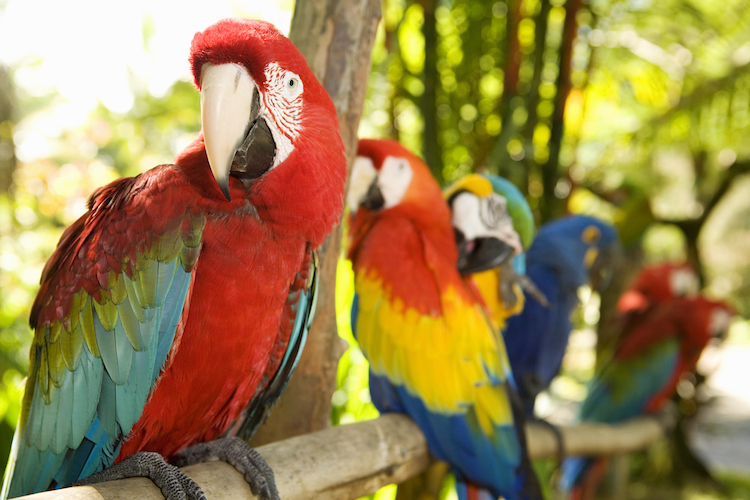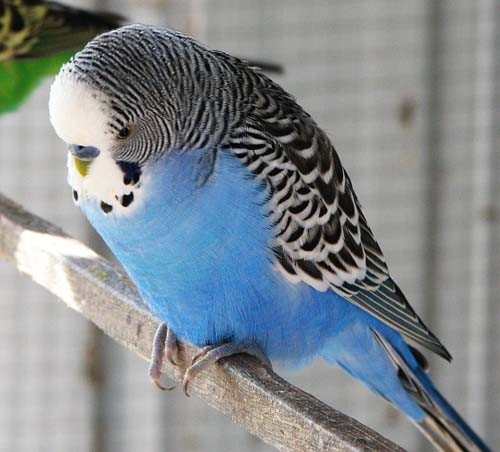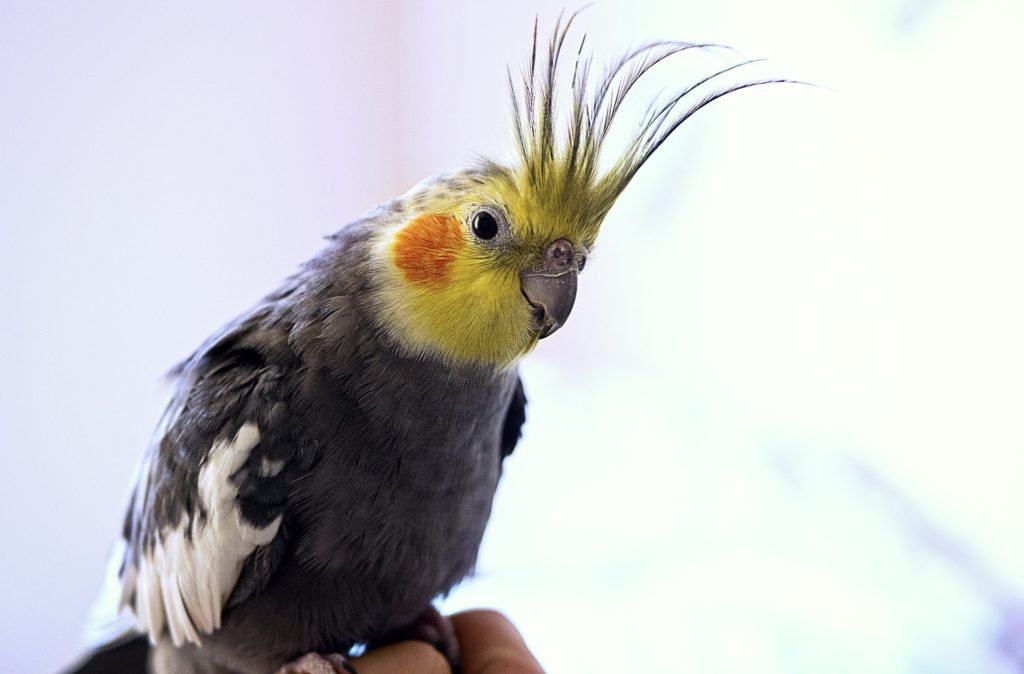What Is A Parrot?
Parrots come in a variety of colors and are typically found in hot climates including rainforests, grasslands, savannas, semi-arid regions, and even islands. Some species, such as the Kea parrot, which lives in the mountainous regions of New Zealand’s South Island, defy the trend and prefer colder climates.
Parrots are much more than the archetypal pirate “accessory” that is frequently shown in movies, books, and other media. The majority of parrots are wild, however, several species have been kept as pets for many years. According to the San Diego Zoo’s website, the first written account of a captive parrot dates back to 400 B.C. These excellent avian companions now roam the world, living in the hearts and homes of people everywhere.
Parrots come in a range of hues and are commonly found in hot conditions such as rainforests, grasslands, savannas, semi-arid areas, and even islands. Some species, such as the Kea parrot, which lives in the high regions of New Zealand’s South Island, defy the trend and prefer colder weather.
Parrots are much more than the stereotypical pirate “accessory” seen in films, books, and other media. The majority of parrots are wild, although a few species have been maintained as pets for years. According to the San Diego Zoo’s website, the first written record of a captive parrot dates from 400 B.C. These wonderful avian companions now wander the planet, residing in the hearts and homes of people all around.
A bird with a bent beak is considered a parrot. This is why they are sometimes known as hookbills. They must also have zygodactyl feet, which have four toes, two facing forward and two facing backward, similar to humans’ opposable thumbs and fingers. This gives parrots the ability to move objects so effectively with their feet.
The canaries, finches, doves, toucans, chickens, and other birds are kept as friends, but they are no longer parrots. These species belong to orders other than the Psittaciformes of parrots.
Companion parrots range in size from small 5-inch lovebirds to giant macaws that can be forty inches long, head to tail. Colors also differ per species. Some parrots mimic multiple colors, like lories, while others wear two or only one color, such as Vasa parrots. Sometimes, the male and female of a species appear to be completely distinct, as in the Eclectus.
Pet birds are very distinct from pet

Aside from their wings and feathers, a parrot’s most distinguishing feature is its beak. Parrots are extremely skilled at using their beaks, which function almost like a hand for them.
They utilize it to climb, maintain, manipulate, and eat! Beaks grow regularly, and if a parrot’s weight loss program and surroundings do not help keep the beak worn down, it should be cut to prevent overgrowth.
Parrots have a longer life expectancy than many other pet species. Small birds, such as budgies and lovebirds, are not considered senior until they reach the age of six; cockatiels are not considered senior until they reach the age of twelve; and big birds, such as Amazons, macaws, cockatoos, and African greys, are not considered senior until they reach the age of thirty.
Parrots of all sizes can live to be very old. Adding a parrot to your family is a long-term commitment.
Parrots are birds, and ladybirds can lay eggs whether or not a male fowl is present; however, unfertilized eggs do not hatch. Breeding activity is influenced by the season and environmental conditions. Consult your avian doctor for information on what to expect regarding egg laying in your parrot’s species.
A bird’s crop is a little storage pouch that sits beside the esophagus between the mouth and the proventriculus/stomach. The crop is valuable, but it is also susceptible to crop disease and impaction.
Birds have feathers, and they molt (shed). This means that new feathers are required to fill up the gaps left by misplaced feathers. This is where blood feathers come in.
Blood feathers are continuously growing feathers. They are shorter than adult feathers, with a softer shaft that is crimson, blue, or black toward the base instead of white. If a growing feather is bent or injured, it may start to bleed.
When a hen falls or thrashes around inside the cage, her blood feathers may smash and bleed. To stop the bleeding, pluck the feather from its base. If your chicken’s blood feather breaks, ask your avian veterinarian how to treat the situation.
Wing feather trims must be done with care. Never trim bloody feathers. It is a good idea to leave feathers on both sides of a blood feather intact to help protect it.
As previously stated, parrots have zygodactyl feet. These allow them to grasp and ascend. Perches are vital for parrot foot health.
Providing multiple perches in and out of the cage with the appropriate diameter and textures encourages healthy foot health. Maintaining clipped nails is also important.
Trimming your parrot’s nails regularly reduces the risk of scratches. Your avian doctor or a skilled fowl groomer can perform nail trims or show you how to do them.
Most parrots’ upper tails include a two-lobed gland called the uropygial gland, sometimes known as the preen gland. It’s known to create a fluid that parrots utilize for grooming.
The secretion combines with sunshine or full-spectrum lights to make vitamin D3, which parrots consume at some time during grooming. Vitamin D3 is essential for proper health. Some humans believe that the secretion also helps birds determine the gender of other birds.
Birds can make their feathers water-resistant by rubbing oils from their preen gland onto them, which is why you’ll often see a bird brush its head against the base of its tail before rubbing it along its feathers.
Amazons and macaws from the Anodorhynchus and Cyanopsitta genera are examples of parrots that lack a uropygial gland.
Parrots’ eyes are laterally situated (on the side of their head), which gives them a wide field of vision but also produces a blind spot directly in front of their beak. They also have monocular vision, which means only one eye is focused on a single object.
Parrots may also contract their pupils deliberately (known as eye pinning), whereas our students and those of other mammals dilate in response to light and certain treatments. Eye pinning can reveal a parrot’s mood; rapid eye pinning typically signals enthusiasm.
Popular Parrots

If there had been a recognition contest among the associate parrots, the top contenders would most likely be cockatiels, budgerigars (budgies/parakeets), African greys, conures, cockatoos, Amazons, lovebirds, parrotlets, and members of the Poicephalus genus, such as Senegal and Meyer’s parrot. Size, personality, attractiveness, vocalizations, and other factors can all contribute to popularity.
With so many different types of pet parrots, people can analyze and choose the feathered companion that is most suited to their house and lifestyle.
Top 10 Most Popular Talking Pet Birds
Native Region / Natural Habitat
Parrots’ natural habitats vary by species, but many come from tropical or subtropical regions in South America, Central America, Africa, and Australasia. Parrots from the Americas are frequently referred to as the New World, whereas those from Africa and Australasia are known as the Old World.
Most wild parrots dwell in warm areas of the Southern Hemisphere, but they can also be found in many other parts of the world, including northern Mexico. Australia, South America, and Central America have the most diverse parrot species.
Not all parrots enjoy warm weather, however. Some parrots enjoy living in snowy climes. Some cold-weather parrots include maroon-fronted parrots, thick-billed parrots, and keas.
Parrots are popular pets due to their brilliant plumage and ability to mimic human speech.
Some parrot pets have fled their owners and bred in remote locations. For example, the monk parakeet, a popular pet bird from subtropical South America, currently lives in the United States after escaping and reproducing in the wild.
Parrot Bird Information
Habits & Diet

Most parrots are gregarious birds that congregate in groups known as flocks. African grey parrots form groups of 20 to 30 birds.
Many animals are monogamous, living their entire lives with only one mate. The mates collaborate to help their children succeed. Parrots in the flock communicate with one another by squawking and transferring their tail feathers.
Some parrots, including the kakapo, are nocturnal. They sleep during the day and forage for food at night.
A cage provides parrots with a hideaway that they recognize as their own in your home. It also helps suit your parrot’s needs by adjusting illumination; parrots prefer 12 hours of sunlight and 12 hours of darkness.
The cage measurement varies depending on the species. All parrots require a cage that allows them to freely unfold their wings within the fully outfitted cage. Species with long tails require cages that are tall enough to accommodate their tail length. Did you catch the words “wholly accessorized?” You must furnish your feathered friend’s “bird cave.” Research the best cage material for your parrot’s species.
The general size guidelines are as follows: For budgies, cockatiels, lovebirds, or parrotlets, the size is 20 x 20 x 30 inches. For conures, Poicephalus, caiques, and miniature macaws, the size is 36 x 24 x 48 inches. For African grey parrots, Amazon parrots, and small cockatoos, the size is 40 x 30 x 60 inches. For macaws and giant cockatoos, the size is 48 x 36 x 66 inches.
The bar spacing varies from 0.5 inches to 1.5 inches for the smallest to largest species. Keep in mind that these recommended cage sizes are the minimum for a single bird and a larger cage is always preferred! If you decide to have numerous parrots, be prepared to provide a cage for each one. Sharing a cage normally only works for birds of the same species, and even then, there’s no assurance that they’ll get along.
Never house birds that are aggressive against each other. Also, before allowing any of your birds to share a cage, be certain that you know what sex they are.
Keeping the cage simple is critical to your parrot’s well-being. Engage in routine daily activities such as changing paper and cleaning dishes and water bottles, as well as weekly and monthly responsibilities such as toy rotation and deep cleaning.
Parrots groom themselves, but they require help from you. Provide opportunities for bathing, like as hanging around in the restroom while you shower or spraying water over their heads. Turn on the shower to see if your feathery friend wants to check it out, or splash in the sink with the faucet turned on. Aside from bathing, your parrot may require beak, wing, and nail trims. Ask your avian doctor for recommendations on these for your parrot.
Eating like a hen is a skill that only some creatures can possess. Parrots are known to eat seeds, nuts, fruit, and vegetables, however, the majority are omnivores rather than herbivores. And some, particularly the lory, feed primarily on nectar.
Some species are more prone to dietary deficits, whereas others are predisposed to obesity. That’s why a well-balanced diet is so vital. Nutri-Berries provide a balanced meal that is also pleasant and interesting, encouraging nutritious foraging. Avi-Cakes, Fruit Delight Avi-Cakes, Gourmet Nutri-Berries, Pellet Berries, and Senior Bird Nutri-Berries are among the various healthy, balanced Lafeber components. For a treat, try Popcorn Nutri-Berries.
In addition to a well-balanced diet, parrots like eating clean foods daily. These are appetizers, thus keep the parts balanced for your bird’s measurements. Some healthful foods that are suitable to feed parrots are berries, bananas, leafy greens, and squash. Some foods that you might consider nutritious are harmful to birds, so do your research and consult your avian veterinarian about any substances you are concerned about for your bird’s safety.
Some birds may care more about where they eat than about what they eat. Cockatiels, for example, are ground foragers and may prefer their food provided on the floor of their cage. Discover your parrot’s species’ recommended eating habits.
Parrot’s Sound And Speech

Many people find parrots’ ability to discuss or replicate noises to be one of their most appealing features. Vocal capacity varies by species; some are loud, others are extremely quiet; some can analyze and speak a human language, while others may only speak birds. Our Pet Bird Selector divides birds into four categories: vocal communicators, chatterers, whistlers, and especially silent. Some species belong to more than one category. Only one species is regarded as exceptionally quiet: the Vasa parrot.
African greys, Amazons, budgies, myna birds, Indian ring-necked parakeets, and Quaker parrots may be the most convincing mimics of human speech. However, just because a species is known to be a “talker” does not guarantee that a specific hen will talk. Every bird is an individual.
Most species make the most noise at sunrise and sunset, or when they want to make contact with their flock (which may include you, the owner!).
Parrot Populations in The World
The International Union for the Conservation of Nature and Natural Resources (IUCN) monitors vulnerable species in the wild. Currently, endangered species kept as companions include the African grey (both Congo and Timneh), lilac-crowned Amazon, Lear’s macaw, sun parakeet, and yellow-headed Amazon.
Many more parrot species are endangered or near threatened, however, some are abundant and under no threat.
